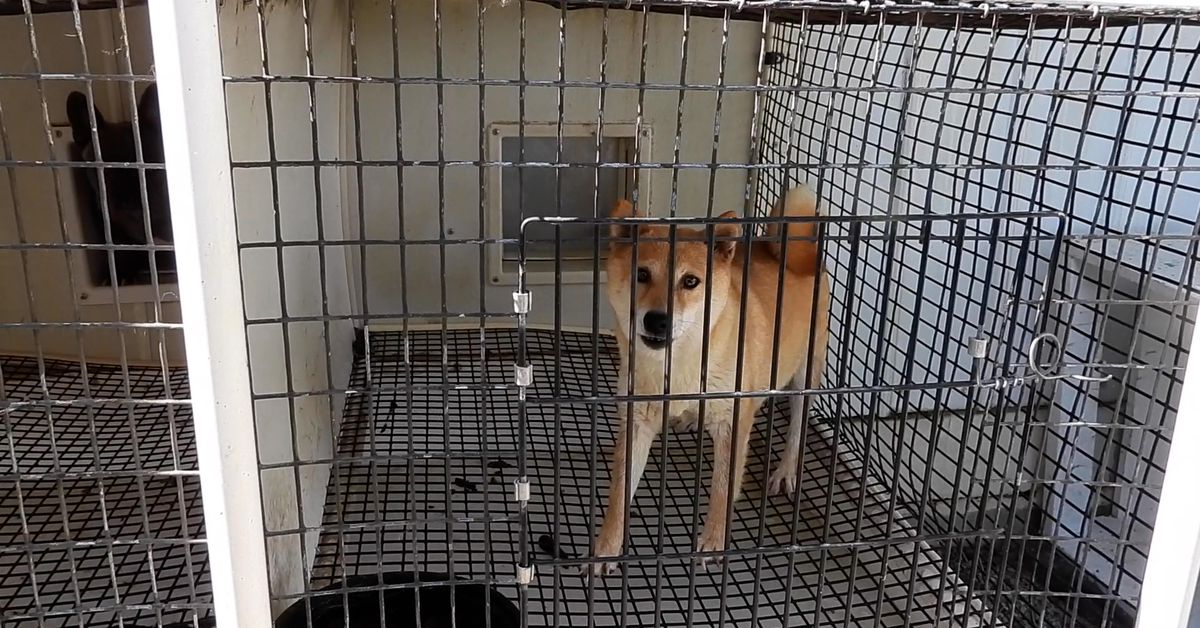The movement to rescue dogs from puppy mills is having a moment

Ten days before Christmas last month, New York state passed a law that bans pet stores from selling some of the most popular pets in the country: dogs, cats, and rabbits. Just a week prior, Clark County, Nevada — which encompasses the city of Las Vegas — passed a similar law (which also forbids selling potbellied pigs), and this month, Washington, DC, did the same, covering almost every pet except fish (the law, like all DC legislation, now awaits approval from Congress).
The new policies represent some of the biggest advancements yet for animal welfare groups in the decades-long campaign against “puppy mills” — operations that confine breeding dogs in cages and pens to churn out puppies, many of which are shipped off to pet stores to fetch hundreds or even thousands of dollars. And New York state, DC, and Clark County aren’t anomalies: Since 2010, more than 440 cities, counties, and states have prohibited the retail sale of dogs, including the states of California and Illinois and the cities of Philadelphia and Houston. (Pet store retail laws still allow pet stores to work with shelters and rescue organizations to adopt out animals, something that pet store giant PetSmart has done for decades.)
But pet store laws are just one part of a larger campaign to crack down on puppy mills. Some states that are home to puppy mills, such as Missouri, Pennsylvania, and Ohio, have passed laws that seem modest on the surface — marginally improving conditions for breeding dogs — but have been restrictive enough to cause many breeders in those states to breed fewer dogs or even close up shop altogether.
The two types of laws appear to be having an effect. The number of USDA-licensed breeders in the wholesale pet trade fell from 4,604 in 2008 to 2,916 in 2022. (These numbers cover all pet breeders, including those that raise fish, cats, and other animals, but dog breeders account for most of them).
According to the Humane Society of the United States, the average number of dogs at operations licensed by the United States Department of Agriculture (USDA) is falling too, from 87 in 2012 to an estimated 57 in 2022. The organization also says the number of pet stores selling dogs fell from around 900 in early 2016 to 600 today. But pet store laws don’t touch the vast majority of dog breeding operations: An estimated three-fourths of dog breeders aren’t required to be licensed and inspected because they’re small or only sell in-person, unlike licensed operations that trade wholesale to pet stores or brokers, or ship puppies to customers sight unseen. (Disclosure: I worked at the Humane Society of the United States on a different animal welfare issue from 2012 to 2017.)
While the fight against puppy mills is one of the few bright spots in what is often an otherwise grim effort against animal cruelty, scores of inspection reports and investigations have revealed that many operations still keep dogs in cramped, filthy conditions, and it’s not uncommon to find dogs suffering from disease, starvation, or untreated illnesses. We may love our dogs — one survey found that Americans spend around $1,200 a year on average on their pups — but far more work needs to be done to clean up an industry that often treats man’s best friend as little more than a four-legged widget in a factory.
The rise of puppy mills and the obstacles to shutting them down
Pets symbolize our morally inconsistent relationship to animals — we love our cats and dogs at home and have crafted laws designed specifically to protect them, yet we eat animals from farms by the billions and largely ignore their mistreatment. But the first puppy mills originated on farms. In the 1950s, pig and chicken farmers began retrofitting some of their barns to house breeding dogs as an extra revenue stream, a practice the USDA encouraged at the time. Some judges have even ruled that breeding dogs are livestock, and in most states, breeding operations are regulated by the state’s department of agriculture.
Perhaps not coincidentally, more than anything else, puppy mills resemble industrialized egg farms: Breeding dogs are kept in pens or cages, sometimes stacked atop one another. Under the federal Animal Welfare Act, breeding operations are only required to give caged dogs six inches of space on each side of their body, though most exceed that minimum. On the smaller end, a commercial dog breeding operation will have a couple dozen dogs, while a larger one will have hundreds.
:no_upscale()/cdn.vox-cdn.com/uploads/chorus_asset/file/24374311/NATL_Puppy_Mill_USDA_Licensed_IA__04Nov2021_2138.jpg)
At around 8 months old, female dogs become sexually mature and go on to produce two litters a year until their productivity wanes — after around six pregnancies — and the owner will kill them, or more rarely adopt them out, according to John Goodwin, senior director of the Humane Society of the United States’ campaign against puppy mills.
Breeding dogs kept in puppy mills are denied the opportunity to express their most basic, natural behaviors of running and playing to anything like the degree they would get in a normal home environment. Breeders are required to give dogs regular exercise, but “regular” is up to the discretion of a veterinarian and is hard to enforce, and operations can be exempted from exercise requirements if caged dogs are given twice the amount of required minimum space. Technically, in most states, a dog can stay in a cage or pen from birth to death — except when they’re nursing puppies — if they have one foot of space on each side and above them.
“USDA standards are based on survival,” said Bob Baker, executive director of the Missouri Alliance for Animal Legislation and a 40-year veteran in the field. “They’re not humane standards.”
Despite those anemic standards, Mike Bober of the Pet Advocacy Network, which lobbies for pet stores, admitted there are “definitely bad breeders out there,” but that he believes the vast majority of USDA-licensed breeders do well by their dogs.
Jennie Lintz, director of the ASPCA’s anti-puppy mill campaign, strongly disputes that notion. “They’re producing puppies in a wholesale environment, which tends to mean you’re focusing on quantity first, and using the least amount of resources possible to increase your profits,” Lintz said. “These animals are not pets. They’re there to breed animals to be shipped and sold to pet stores or on the internet.”
:no_upscale()/cdn.vox-cdn.com/uploads/chorus_asset/file/24374327/Margaret_Manning_in_Pocahontas__AR.png)
But some states have gone beyond federal standards. In 2008, Pennsylvania passed a law to increase the minimum cage size and exercise periods, require twice-annual veterinary exams, and ban wire cage flooring. Almost 80 percent of breeders in the state downsized or exited the industry after the law was passed.
In 2010, voters in Missouri — “the puppy mill capital of America” — narrowly passed a ballot measure to improve the welfare of breeding dogs in puppy mills. After pressure from the state’s dog breeders, the Democratic governor at the time — Jay Nixon — signed legislation to repeal the ballot measure and approved new legislation to replace it. The new law eliminated some parts of the original law, such as a cap on the number of breeding dogs and the number of pregnancies in an 18-month period, and instituted a longer phase-in period. But the new law also required more space and exercise access, and added prosecutorial powers that resulted in stronger enforcement. From 2010 to 2022, the number of puppies sold from licensed breeders in the state fell from 265,000 to about 100,000.
:no_upscale()/cdn.vox-cdn.com/uploads/chorus_asset/file/24374449/UdLK3_missouri_s_2011_puppy_mill_law_cut_the_number_of_puppies_produced_in_the_state_by_more_than_half__1_.png)
But Baker says that for all their successes, working on a state-by-state method is “like playing whack-a-mole. … You knock ’em down in one area and they spring up in other states.”
Puppy mill operators might move to another state or sell on the internet, Baker said, which makes up a growing source of sales of dogs from puppy mills. Many dogs are sold through informal channels, like on Craigslist or at flea markets, while others are sold through websites like Puppies.com, which advertise individual dogs and then drive or ship them to the buyer’s home or arrange pick-up at a public location like a parking lot. If a breeder has fewer than five female breeding dogs or sells in-person, they’re not required to obtain a USDA license.
“They don’t want you to see the facility,” Baker said. “And that’s the big warning sign. … [If] they don’t let you see the parents of your puppy, then walk away — that’s a clear sign that it’s not a good facility.”
Weak laws, weak enforcement
Though federal protections for breeding dogs are weak to begin with, activists — and parts of the federal government — say they’re also grossly under-enforced. In a damning 2010 report, the USDA Inspector General (OIG), a federal office charged with investigating and auditing USDA programs, said the USDA’s enforcement was ineffective and that more than half of the 4,250 violators in a two-year period repeatedly violated the law after re-inspection. In the 2010s, the USDA started and stopped one scheme that allowed dog breeders to avoid citation for a violation if they self-reported and addressed it, and another that excluded minor violations from public inspection reports.
In a follow-up 2021 report, the OIG said the USDA “did not consistently address or adequately document 145 of the 322 complaints we reviewed,” and that the USDA is “not able to ensure the overall health and humane treatment of animals at these facilities.” In response to the 2021 report, the USDA told Vox it has since fixed its documentation and response issues.
Critics say that many bad actors maintain their licenses despite repeated violations. One Missouri breeding operation racked up 20 violations over a few years, including reports of cutting off dogs’ tails, starving Weimaraner puppies, one Shiba Inu who couldn’t move or lift the front part of his body, and two Mastiffs caged together who couldn’t turn about freely. And yet that operation continually had its license renewed and wasn’t required to pay any fines. (The puppy mill wasn’t a lone bad apple; the Humane Society’s annual “Horrible Hundred” report on some of the worst puppy mills in the country is chock full of equally depressing findings.)
:no_upscale()/cdn.vox-cdn.com/uploads/chorus_asset/file/24374459/Debra_Deters_in_Centralia__KS.png)
According to the ASPCA, the USDA didn’t collect any fines from breeders or confiscate any dogs from fiscal year 2018 to 2022, despite the agency documenting hundreds of violations — sometimes over 1,000 — in some years over the last decade.
“The United States Department of Agriculture is absolutely captured and beholden to political and financial interests,” said Jessica Blome, who enforced Missouri’s puppy mill law in the early 2010s when she worked in the Missouri attorney general’s office. “It doesn’t enforce, it doesn’t do anything.”
In response, a USDA spokesperson told Vox: “[The USDA] takes the welfare of animals very seriously. Our investigative process for individuals and/or businesses found out of compliance with the AWA [Animal Welfare Act] may lead to an enforcement action. If deficiencies remain uncorrected at subsequent inspections, [USDA] considers legal action. Repeat non-compliances and serious incidents may warrant enforcement actions such as letters of warning, monetary penalties, license suspensions and revocations.”
While animal advocates have found real success through cracking down on retail pet outlets, they represent a relatively small proportion of pet sales overall, making up around 9 percent of dogs sold in stores. Cracking down on the growing number of online sellers is challenging, as is passing laws in states that host the bulk of puppy mills. In recent years the USDA has made only minor changes to its standards.
But advocates say the few state welfare laws and the wave of pet store laws, combined with old-fashioned educational efforts, are turning people off from buying puppies. Many groups like the Humane Society aren’t opposed to small-scale, high-end dog breeding, but they tout adoption as the most humane option as it prevents one more dog from being euthanized in a shelter.
That message has penetrated public consciousness. Consider these staggering estimates: In 1973, when there were around 35 million dogs in the US, 7 million dogs were euthanized in animal shelters; in 2019, 390,000 dogs were euthanized in shelters out of a total population of 80 million dogs.
“I think I can see a distant light at the end of the tunnel,” says the Humane Society’s Goodwin. “But by no means does that mean that this is gonna be done in one or two years or that we should take the foot off the gas.”








